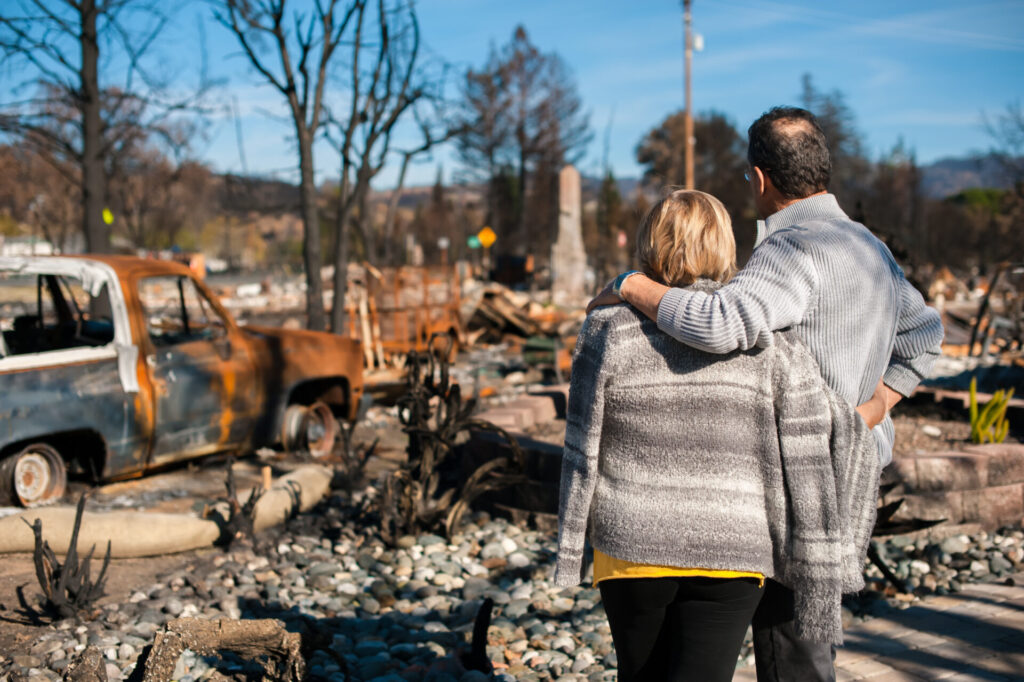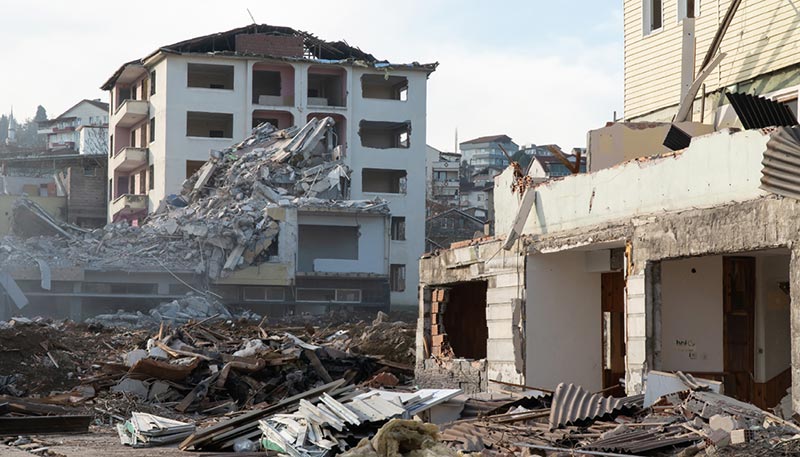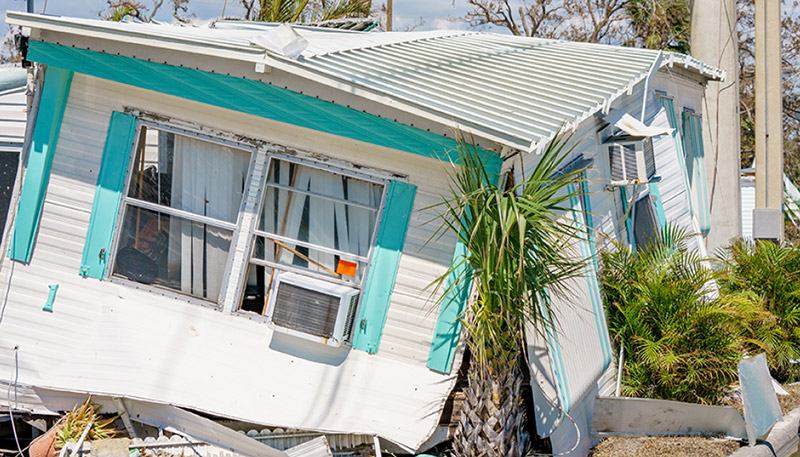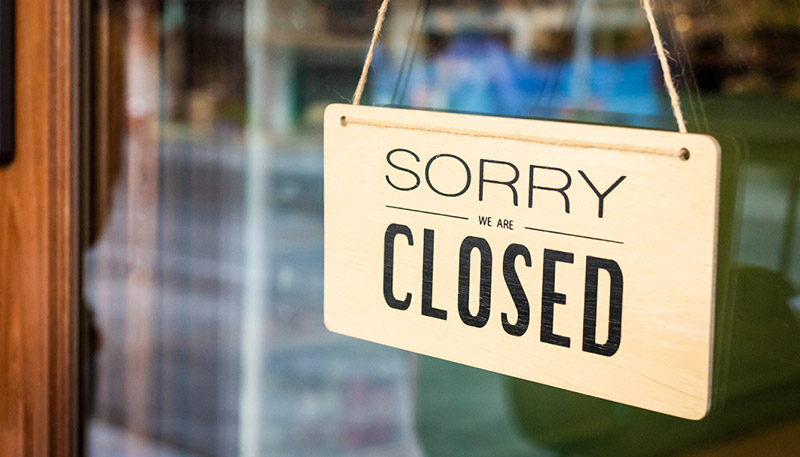Natural disasters have devastating consequences for individuals, families, and businesses alike. No one should have to live with the anxiety that an unexpected natural disaster could threaten their livelihood or derail their future. Insurance policies are designed to help allay those fears, but not all coverage is created equal. Regularly reviewing a homeowner’s or business insurance policy is the best way to make sure that damages will be covered when disaster does strike.
The Growing Threat of Natural Disasters
According to the National Centers for Environmental Information, 2023 in the United States saw at least 25 weather or climate disaster events where damages exceeded $1 billion dollars, including droughts, floods, tropical cyclones, and winter storms. Between 1980 and 2022, the per-year average for billion-dollar climate events was a little more than eight.
Although natural disasters have always been part of the planet’s climate, there is no question that these events are becoming more common, more destructive, and more expensive. Considering the increased likelihood that one of these events could impact them in the future, people who own homes and businesses certainly need to verify that they have adequate disaster insurance coverage.

The Role of Natural Disaster Coverage
Natural disaster coverage refers to insurance protection that helps individuals, businesses, and communities recover financially from damage caused by natural calamities. This coverage typically protests owners from events like hurricanes, wildfires, tornadoes, and other catastrophic occurrences beyond human control. It helps policyholders by providing funds to repair or rebuild damaged property, replace belongings, and cover additional living expenses if they are temporarily displaced due to the disaster. The specific types of natural disasters covered and the extent of coverage can vary based on the insurance policy and the geographical location of the insured property.
Why Policy Review Matters
Not all natural disasters and damage are covered by a standard insurance policy. For instance, someone with a business in California may assume that earthquake damage is included as natural disaster insurance coverage, but the truth is that earthquake insurance is not typically included and must be specifically added as a special endorsement to an insurance policy. Even for policyholders who are extremely diligent in selecting their insurance coverage, regularly reviewing their policies is a good practice to ensure there are no surprises in the event of a natural disaster.
Understanding Coverage Gaps
An insurance coverage gap occurs when there is a lack of coverage or insufficient protection provided by an insurance policy. A coverage gap can happen due to various reasons, including:
- Exclusions: Certain events or items might not be covered by your policy. For instance, a standard homeowner’s insurance policy might not cover flood damage, leaving a gap in protection if a flood occurs.
- Policy Limits: The coverage provided by the policy might have limits. If the cost of the damage exceeds disaster coverage limits, there could be a gap where the policy doesn’t cover the full extent of the loss.
- Underinsurance: Sometimes, individuals might opt for lower coverage amounts to save money on premiums. In the event of a significant loss, they may find that their coverage is insufficient to cover the entire cost of the damage.
- Lapses in Coverage: If there is a lapse in your insurance coverage due to missed payments or policy expiration and a loss occurs during that period, it creates a gap where there is no coverage to pay for the loss.
- Misunderstanding or Misinterpretation: In some cases, policyholders might misunderstand the terms or conditions of their policy, causing them to assume certain events are covered when they are not, leading to a coverage gap.
To mitigate coverage gaps, it’s essential for policyholders to regularly review their insurance policies, understand the terms, and make necessary adjustments to ensure adequate coverage. Consulting with an insurance agent or professional can help with identifying potential gaps and finding suitable solutions.
Ensuring Adequate Limits
Insurance policy limits are the amount that an insurance company is obligated to pay to repair or replace covered property in the event of covered damage. For a business, local and federal regulations may determine the insurance coverage that a business must have. Business insurance limits can be based on the number of employees, cost of the business property or lease, and value of business equipment, such as furniture and computers, that could be damaged or lost in a natural disaster.
Insurance coverage with higher limits will mean paying higher insurance premiums. However, if an insurance policy has a limit lower than the damage that occurs, the policyholder will have to pay out of pocket to finish completing the repairs.
Policyholders should keep in mind that the cost of temporarily shutting down a business or being unable to occupy a home can extend far beyond actual repairs and may include paying salaries, setting up remote offices, and living in temporary shelter like a hotel while repairs are made. Policyholders should review their policies to ensure their limits account for these costs as well as cover actual damage.

Identifying Appropriate Types of Coverage
During a disaster insurance policy review, it’s possible that a policyholder may determine that their standard policy does not offer adequate coverage in the event of a natural disaster. Each situation is unique, but there are some common types of insurance coverage that may be helpful:
- Guaranteed Replacement Coverage: Some policies include market value replacement coverage, which means if a property is destroyed in a covered disaster, the policyholder is covered up to the market value of the property. However, the reality is that it may cost more to rebuild, depending on the cost of supplies and labor, which are often higher after a disaster has occurred. Guaranteed replacement coverage means that the actual cost of replacing the property is covered, even if it exceeds market value.
- Hurricane Insurance: Depending on the location, some insurance policies might require additional coverage specifically for hurricane-related damage, including wind and storm surge damage.
- Wildfire Insurance: In areas prone to wildfires, specific insurance policies may cover damage caused by wildfires, including destruction to homes, structures, and personal belongings.
- Tornado Insurance: Coverage for damage caused by tornadoes might be included in standard homeowners’ insurance policies, but it’s crucial to check for any limitations or additional coverage requirements, especially in high-risk areas.
- Volcanic Eruption Insurance: In regions near active volcanoes, specialized insurance might be available to cover damage resulting from volcanic eruptions, such as ash damage or property destruction.
Note that in some cases, policy exclusions may require the purchase of additional coverage for unusual situations.
Reviewing Policy Exclusions
Perhaps the most important aspect of an insurance policy review is reviewing the policy’s exclusions. The worst-case scenario is that a natural disaster occurs, and the policyholder believes they are covered when they are not. As referenced earlier, some common natural disaster policy exclusions include:
- Earthquakes: Often sold as a separate policy or added as an endorsement to a homeowner’s insurance policy, earthquake insurance covers damage resulting from earthquakes. These events are typically not covered in standard policies. This type of policy may also include landslides, which are also often exempt from coverage under standard policies.
- Flooding: Typically sold separately from standard homeowners’ insurance, flood insurance covers damages caused by flooding. This coverage is essential, especially for those living in flood-prone areas.
- Damage Due to Lack of Maintenance: When a property has not been properly maintained prior to a disaster — for instance, tree trimming has been neglected — subsequent damage that is due to that issue may not be covered (e.g., a fallen tree branch that should have been trimmed).
For homes and businesses located in areas prone to the above disasters, purchasing additional insurance, either through the insurance company or through the National Flood Insurance Program may be necessary for proper coverage.
Risk Assessment
Assessing the risk of a property is a critical part of buying insurance and determining what kind of coverage is necessary. While a property owner may have an overall understanding of the risks they face, a true risk assessment professional who works in the insurance industry is the best resource. An insurance agent can help policyholders review their current policies and identify gaps related to the property’s risk profile.
Performing annual insurance policy reviews can ensure that there are no surprises if a natural disaster occurs. In the event a home or business suffers from damage during a natural disaster, the policyholder should feel empowered to reach out to a natural disaster public adjuster for restaurants, businesses, and homeowners. Public insurance adjusters work for the policyholder rather than an insurance company and can help policyholders navigate their claims and get reimbursed fairly. Reach out to WorldClaim for more information about public insurance adjusters and how we can help.



